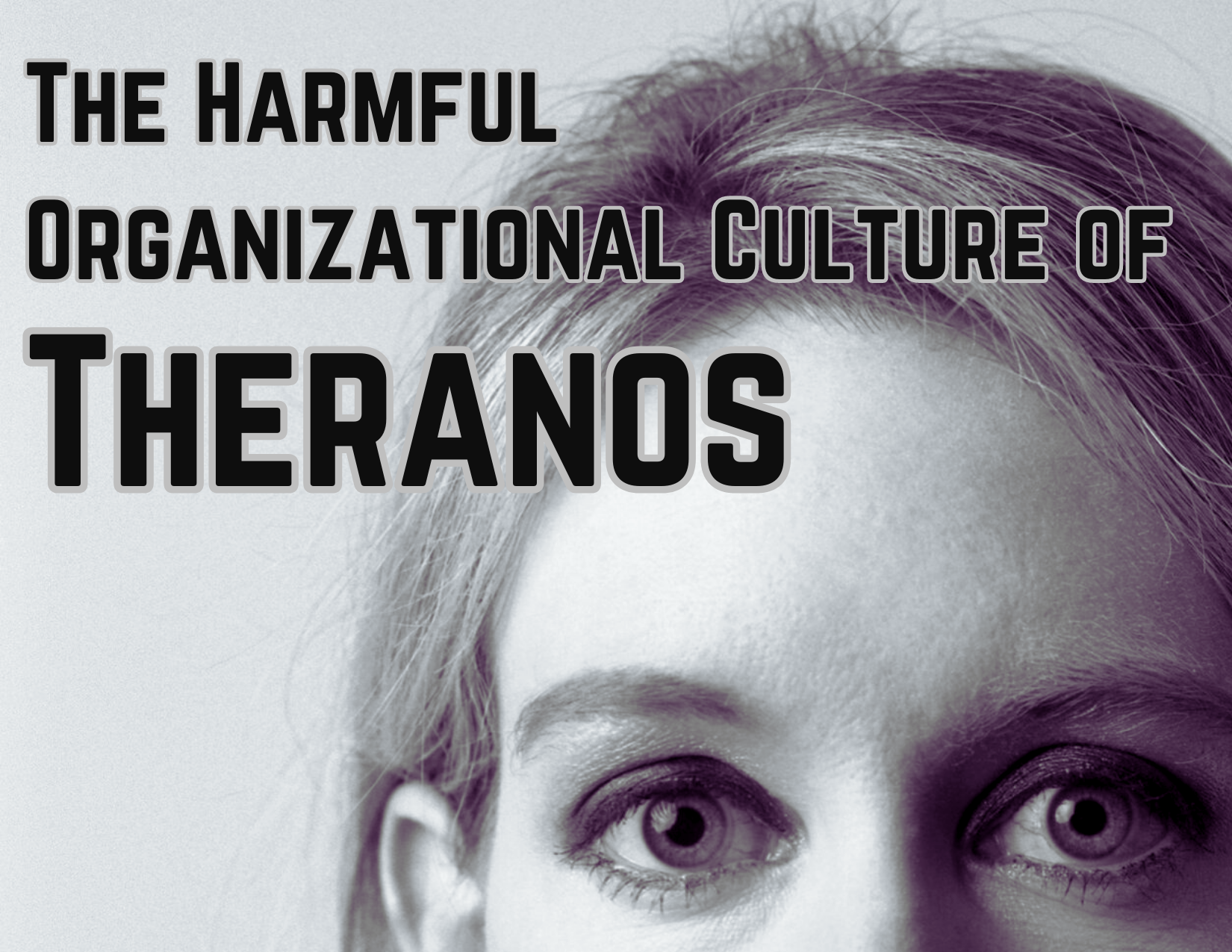
The rise and fall of the blood-testing company, Theranos, has already been heavily documented through journalism, a podcast, and a documentary. Consumers have long been privy to the meteoric ascent of alleged wunderkind, Elizabeth Holmes, who started the company when she was only 19 years old in 2003 in the pursuit of developing a method of testing blood that required smaller samples and vastly shorter testing times, all by a machine. As many of us know now, this was eventually proven to be false. While Holmes’ attempts to turn the medical technology industry on its ear may have gone off the rails there has been recent discourse regarding how companies across the entire economy can learn from the mistakes of Theranos’ harmful organizational culture that played a role in its ultimate undoing.
The harmful organizational culture of Theranos likely played a large role in allowing the company to subsist for so long on fraudulent claims to both investors and consumers. Because dishonesty and cutting corners were a major part of the culture within the company, employees at all levels were forced to make a choice to either be complicit in the fraud, or walk away from the operation entirely. However, in examining the culture of fear that Holmes managed to foster throughout her tenure with the company, it’s worth noting how management and executives must be viigilant of similar behaviors within their own corporations to protect themselves against harmful organizational culture.
No Fear Careers
The culture of fear within Theranos was practically by design when it came to defrauding investors. Employees feared they would be subject to litigation or loss of employment if they asked too many questions or became too loose-lipped regarding Edison. This was the first prong in perpetuating the fraud. The second prong was how the harmful organizational culture leaked outside the company to third parties. Not only did it prevent internal employees from blowing the whistle on Theranos’ shortcomings, but it also prevented those outside the company from asking vital questions. Experts who had been contracted to consult or work directly on the project were scrutinizing the capabilities of Edison, but Elizabeth Holmes and her associates were successful in silencing these detractors. As a result, there was never an honest and critical dialogue of Theranos’ mission and values, which contributed to its destruction in 2015.
Discerning Doers
Fear is just one way that harmful organizational culture can poison the company well. One of the greatest marks of a company’s culture can be the measure of those who were either willing or unwilling to hitch their horses to its wagon. It’s easy to dismiss a lower-level employee who could have walked away from the company for a laundry list of reasons. However, the departure of most enmeshed professionals deserves a closer look. Theranos and Holmes poached engineers and technicians from corporate giants such as Apple and reputable scientists to consult on Edison, but when those professionals balked or dissented along the way, they left the project. Advertisers also began to jump ship when their confidence in the product were understandably shaken. What’s important for other business owners to understand is that when there is a pattern of employees or contractors headed for the door, their must be steps in place to ensure the full picture is in crisp focus—things like exit interviews detailing their reasons for leaving, so that any toxic aspects of the company culture will be brought to light.
Corporate Culture Checkup
With the concept of corporate culture encapsulating so many different aspects of a business’ organizational structure, most in leadership are unsure of where to begin when it comes to evaluating it. However, if there’s one main takeaway from the Theranos’ collapse, it’s that corporate culture must be periodically evaluated in order to maintain the company’s mission and values. Because Theranos executives did not prioritize maintaining their corporate culture, a harmful rot was able to infect the organizational structure, and persistently grow over a decade. Not only must leadership invest in having their corporate culture evaluated, but once they have the full picture, they must take concrete steps towards adjusting day-to-day operations, acquiring new tools and methods for reinforcing their culture, and holding any employees who have been involved in misconduct accountable for their actions.



